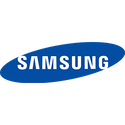Ryan McCurdy, President of Lenovo North America, revealed ambitious forward-thinking product roadmap during an interview with
CRN magazine. A hybrid strategic approach will create an anticipated AI fast lane on future hardware—McCurdy, a former Intel veteran, stated: "there will be a steady stream of product development to add (AI PC) hardware capabilities in a chicken-and-egg scenario for the OS and for the (independent software vendor) community to develop their latest AI capabilities on top of that hardware...So we are really paving the AI autobahn from a hardware perspective so that we can get the AI software cars to go faster on them." Lenovo—as expected—is jumping on the
AI-on-device train, but it will be diversifying its range of AI server systems with new AMD and Intel-powered options. The company has reacted to recent Team Green AI GPU supply issues—alternative units are now in the picture: "with NVIDIA, I think there's obviously lead times associated with it, and there's some end customer identification, to make sure that the products are going to certain identified end customers. As we showcased at Tech World with NVIDIA on stage, AMD on stage, Intel on stage and Microsoft on stage, those industry partnerships are critical to not only how we operate on a tactical supply chain question but also on a strategic what's our value proposition."
McCurdy did not go into detail about upcoming Intel-based server equipment, but seemed excited about AMD's
Instinct MI300X accelerator—Lenovo was (previously) announced as one of the early OEM takers of Team Red's latest CDNA 3.0 tech. CRN asked about the firm's outlook for upcoming MI300X-based inventory—McCurdy responded with: "I won't comment on an unreleased product, but the partnership I think illustrates the larger point, which is the industry is looking for a broad array of options. Obviously, when you have any sort of lead times, especially six-month, nine-month and 12-month lead times, there is interest in this incredible technology to be more broadly available. I think you could say in a very generic sense, demand is as high as we've ever seen for the product. And then it comes down to getting the infrastructure launched, getting testing done, and getting workloads validated, and all that work is underway. So I think there is a very hungry end customer-partner user base when it comes to alternatives and a more broad, diverse set of solutions."













































